🏃♂️
🌳
Interactive Installation for Aboriginal Site
In the middle of 2020, I took IDEA9102 Studio. We followed a human-centred and creative design process to iteratively research, design and prototype a design concept. The focus is on the conceptual and detailed design of the idea, its aesthetic, the user experience, the interaction mapping between users and the interactive system within the context of use, and the fit of the system to the site conditions.
Problem
Based on the site's recent and indigenous history, affordances, spatial characteristics and current usage patterns of the proposed site, to identify opportunities for playful and artistic interventions.
Solution
Developing a multi-screens installation to encourage the audience to participate and have playful social experiences
Role
UX Researcher
Interaction Designer
Programming
Product Design
Time
3 month
Teammates
Sonya Tian (UX Researcher, Visual Design, 3D modelling)
Iris Wang (UX Researcher, Content Strategy)
In this project, we created a digital interactive work responding to a specific public space. We needed to take account of history, cultural background, local peculiarities and Indigenous culture to transform a plain site into a space full of playfulness and its unique vitality. We aimed to encourage the audience to participate and have playful social experiences in this space, and explore the possibility of people socializing in public spaces under the influence of the Covid-19 epidemic.
Site Research

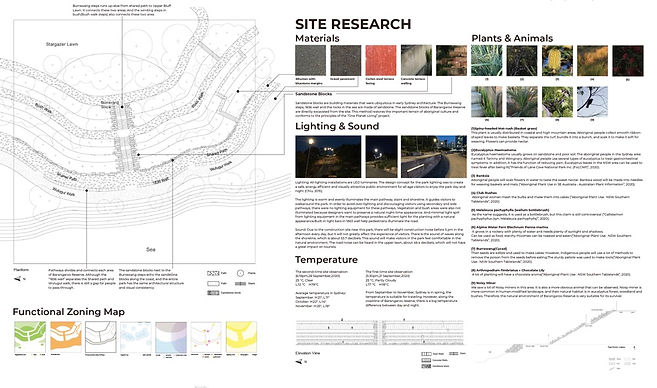
Download PDF to view full research report
Cultural & History of
Barangaroo
it showcases a combination of natural artwork and aboriginal culture heritage.
The Gadigal are the traditional owners of the land on which Barangaroo now stands and are a clan of the Eora Nation.
Barangaroo Reserve restores the visual geography of the headland that were originally home to the indigenous people of the Eora Nation at the time of European arrival.
This park offers an opportunity for the visitors to experience a long-lost connection to the times before British colonial period.
Why Burrawang Steps
in Barangaroo?
A quiet place in the rustling and bustling city.
An important path connecting upper and lower areas
At five or six o’clock in the afternoon, many people choose to walk or run on the surrounding paths,
Dig the Resource
All the sandstone building materials of this site were directly excavated from the original site
All the plants in this reserve are native plants of NSW
Restoring the natural landform characteristics and early architectural style of Sydney.
User Group
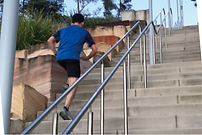
Excersicer
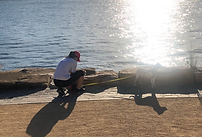
Dog Walker

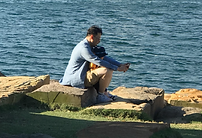
Young Parents and Kids
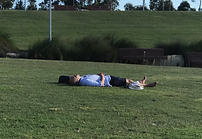
Roamer
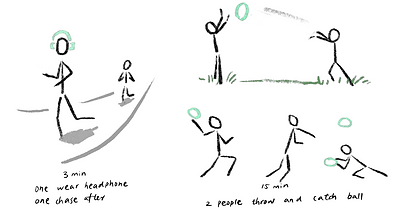
50% users come here for exercise, they
-
usually come in pairs
-
spend more time in a relatively fixed range
-
usually focus more on the activity and communication with their partners
-
become the main group after 5:30pm
-
When joggers run by, people tend to keep a distance to their running route to provide enough space for them
-
competitiveness can be generated between joggers without knowing each other
PLAY in our mind
-
Physiologically and socially enjoyment while exploring and discovering the new and the unknown.
-
Through an individual’s unique interaction with the site, facilities and environment, people would be able to enrich their own ideologies through imagination and thus they would generate their own ideo-pleasure as a result of different experience and interpretation of objects.
Concept Development
In light of our observations of user interaction with the site in both day-time and night-time, we have narrowed down three design opportunities that could potentially reinvigorate Aboriginal cultural heritage and enhance user engagement and experience with the site.
Brainstorming
Each of us initiated one idea in a certain time before exchanging idea and add details to each other's concept
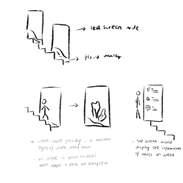
Walk with Fish
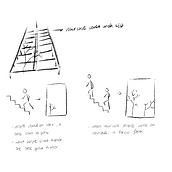
Step into Forest

Sound of Time
Presentation Key feedback
-
Idea 1 could focus more on incorporating existing resources on site. Inspiration could be drawn from the site, user and background research previously.
-
Idea 2 is not that feasible as we have to consider the potential risks of establishing LED devices near trees. It may result in certain damage to trees on site.
-
Idea 3 is not applicable as there is limited resource in relation to Aboriginal language, making it hard for us to find Aboriginal word banks that are needed to support the installation.
-
have an explicit and clear target audience and build on the ideas upon the purpose of meeting their needs and connecting to the Aborignial culture.
-
need to consider design solutions to engage users to further use the design
Concept Refine
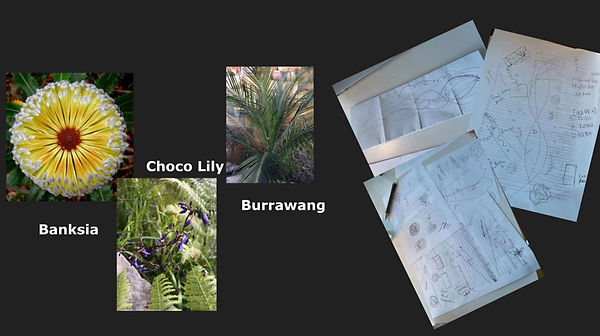
Based on the feedback, we conducted the group meeting, focusing on exploring clear design direction and how to improve current design ideas. We confirmed our design target audience, which is exercisers. We decided to explore more of idea 1 - LED panel showcasing local plants on site along the staircases. We would like to incorporate plants into the LED panel. We create unique patterns based on Sensory Ethnography*.
*Sensory Ethnography help us to appreciate the space by all senses, namely sound, smell, temperature, touch, etc. then we visualise our mind by simple patterns.
Storyboard
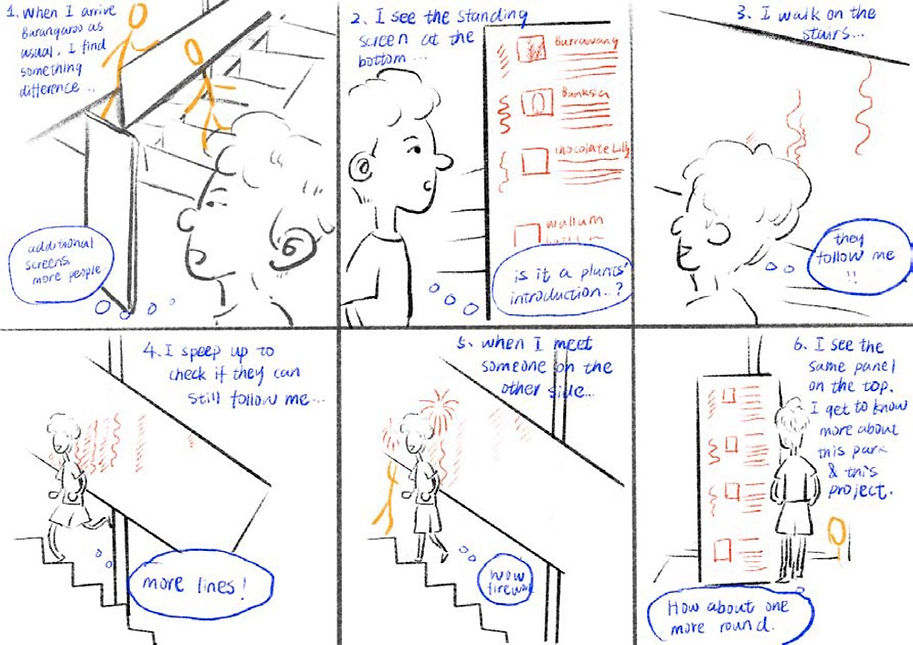
Iteration
Low-fi Prototype
As our concept is a multi-panels installation, we choose to use a storyboard that users can understand the spatial relationships between user, installation and environment. We place it in a PowerPoint that participants can go through step by step.

Based on the necessary steps, I sketched by Procreate. The storyboard can be divided into seven scenarios:
- arriving at one end of the staircase and noticing the information board
- walking on the stairs and noticing the generation of lines
- meet another user on the other side and observing the special effect
- speeding up and finding the motion changes
- standing and waving vigorously
- looking back and detecting the change of panel
- arrive another end of stair and read the information board again
Each page has a scenario sketch and multiple screen contents in sequence for participants to learn the animatic effect on screens.
First User Test
We engage two university students in the first user test. Yongjin Liu has a regular workout routine in the outdoor environment, while Cecilia Zhang has no exercise habit. In this way, we can obtain suggestions from people with different demands. We conducted the test at the staircase of the lower ground plaza of Central Park. Participants can follow the instructions to walk up and downstairs.
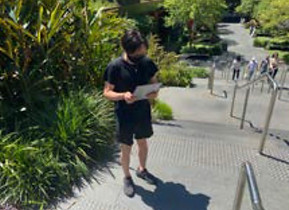
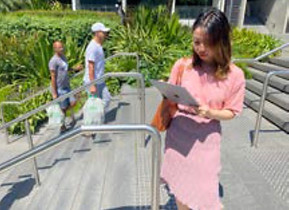
Think-Aloud Table
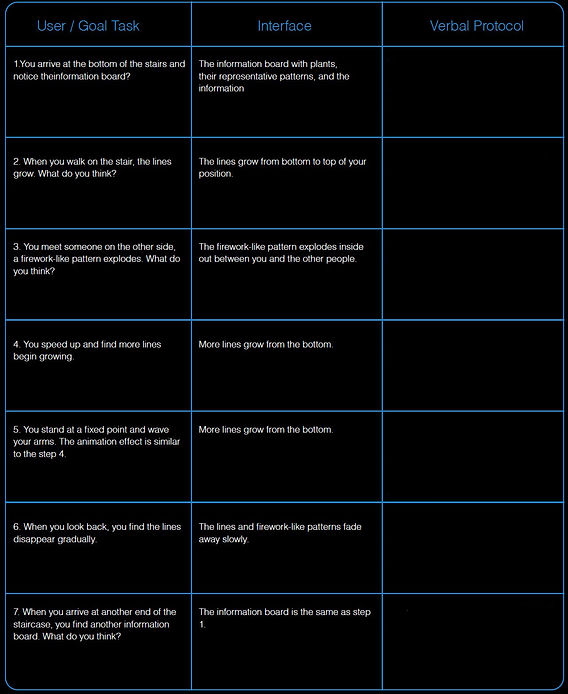
Interview Questions
What do you think if you see this multi-panel installation appear in the park?
Does this installation encourage you to use the staircase? Why or why not?
What do you learn from this experience?
Do you have any other suggestions/questions?
Key Insight
- This concept can engage both the exerciser and passerby to use it repetitively. It can be regarded as an educational installation that users can learn from this experience.
- The firework-like pattern (Melaleuca pachyphylla) needs to be further explained regarding its motion’s meaning.
- We will add simple interaction instructions to the information board.
- We will change the line motion from staying for a while before fading away to growing and fading directly. It strengthens the dynamic change.
- We will remove the confusing falling fig effect.
- To improve the precision of detection, we decided to install the sensor near the stairs. There are less distractions at a low position. It also ensures that the motion of kids can be captured.
Medium-fi Prototype
During the first user test, both the physical characteristics of installation and the animation effect are difficult for our user to understand. As we cannot set up the panel in the park, we decide to develop a 3D modelling to compensate and to enhance the degree of completion for the second test.
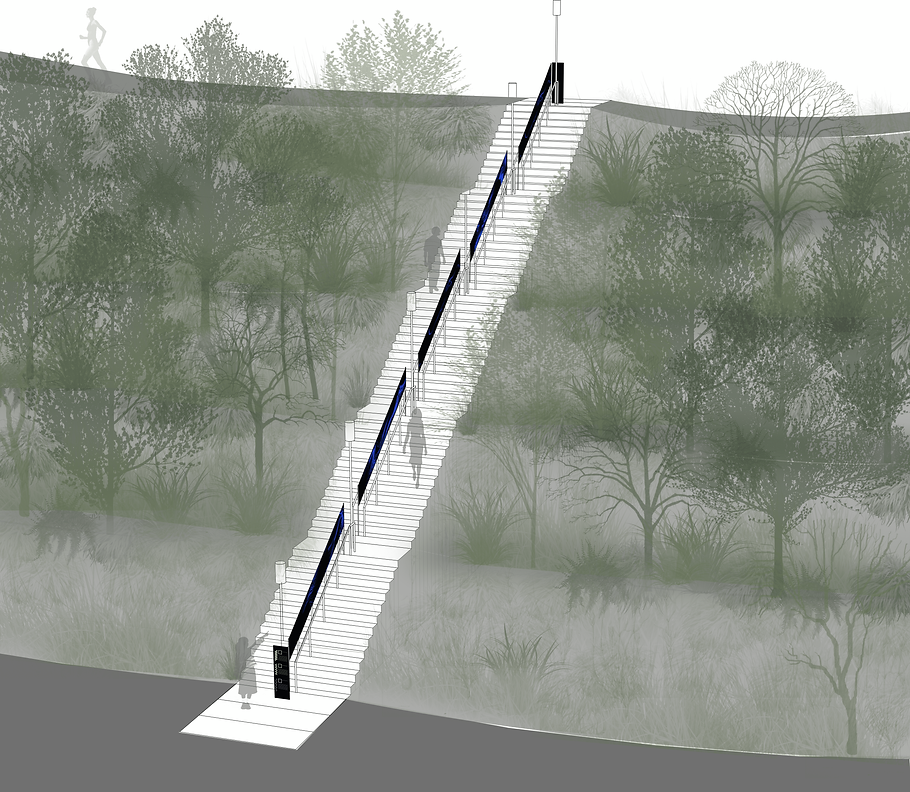
Similar with the previous steps, we led the user go through every step but in 3D mockup built via Rhino.
Second User Test
We conducted the user testing of our medium-fidelity prototype - 3D modelling and 3D design diagrams with our peers from the class. We created a set of personas, giving each participant a specific role, including nearby residents, engineer, athlete, and office worker. For each participant, we recorded their narratives and asked them a few questionsat the end of testing.

David (Male, 35)
Nearby Resident, Engineer
He comes to the park exercise three times a week and uses this stair for shuttle run every time

Tony (Male, 20)
Amateur Athlete
He passes this staircase when he and his teammates are training for long distance running everyday.

Alice (Female, 30)
Nearby Office Worker
She comes to here for a walk. She doesn't exercise often, but sometimes she takes her pet here for Fun.
Think-Aloud
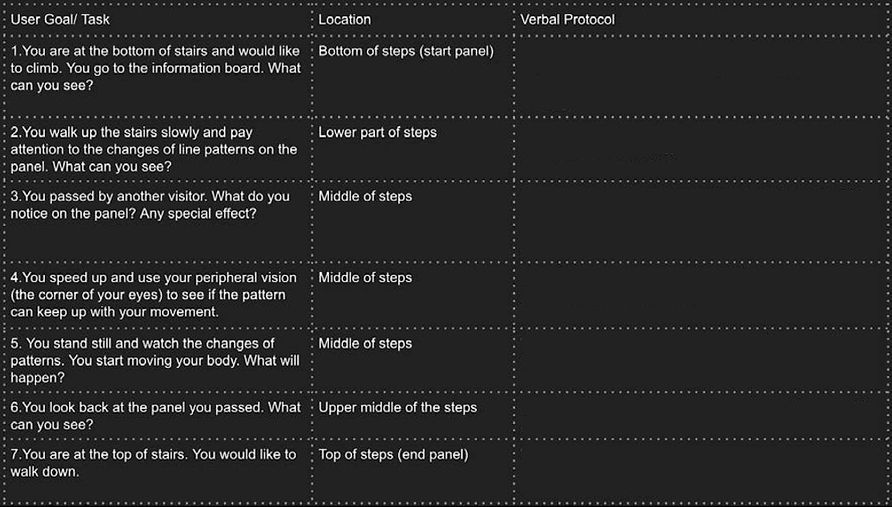
Interview Questions
What is the most interesting part of this design?
Choose three PLEX categories that best represent your experience.
What are the strengths and downsides when you interact with the design?
Do you think you would walk up and down the steps several times to explore the visuals again?
Any suggestions on how to improve?
Key Insight
- Good to incorporate uninterrupted circulated water flowing through the panels from high elevations to lower elevations with white noise - appealing in auditory and visual sense.
- Consider the height of LED panels, to provide an ideal vision perspective for users.
- Consider the colour changing of visuals, to better cultivate user experience and also could be more appealing and fascinating.
- Enhance the special effect when users pass by one another. The intensity of effect should be softer and gentler, but appealing.
- Refine the visual designs, to best represent the abstract sensory aspects of the plants.
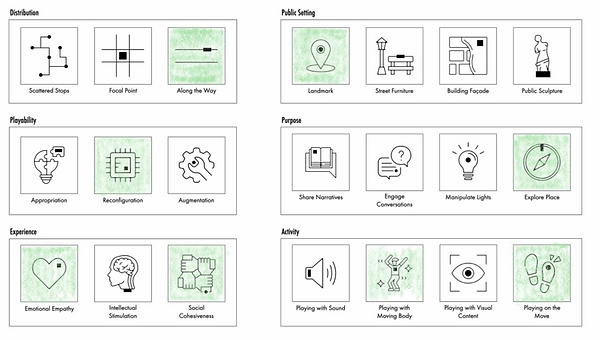
After the user testing, we organised all the resources and materials, and discussed the key findings gained from the testing. We found that the user feedback on PLEX experience covered what we expected at the early design stage, which is discovery, sensation and fantasy. We learned that our design effectively delivers the information and message we want to convey.
High-fi Prototype
For high-fidelity prototypes, we want the user to see and hear the visual and audio outcomes instead of imaging it. Thus, we decided to use Processing to build our final concept. Firstly, we found a coding work from OpenProcessing.com as a reference for the water flow background. Then I'm in charge of the pattern’s logical calculation before embedding three pattern’s calculations into an entire particle system.

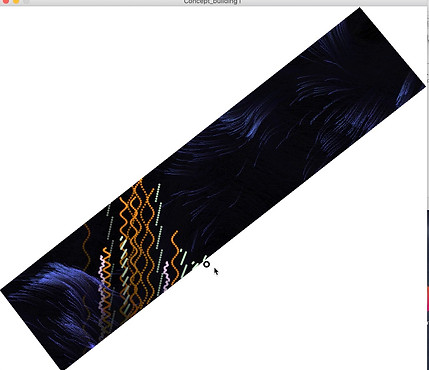
Final User Test
Based on the 3D prototypes and animated visuals, we conducted the user testing using two evaluation methods - Think-
Aloud and Interview. As we kept key features, we delete the PLEX related question and the rest steps and questions remain the same with the second test.
Key Insight
- Make final change to the visual patterns, making it growing at a various speed, adds to the diversity
- White noise sounds only at the top, integrating with the sound of the sea of the bottom of the steps.
- Adjust the height of the LED panel to be 1m, considering the visibility of kids.
Final Product
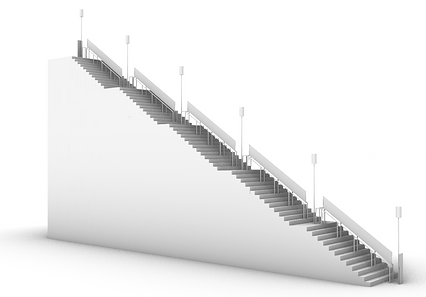

*Click the video at top to see the full concept
Panels:
- Pass by to trigger several growing patterns with different speeds.
- Meet people on the other side to trigger firework effect.
- The patterns will fade away gradually.
- The height of bottom line is about 1 meter to engage kids.
White Noise:
- The sound of sea wave would be played to attract the passerby.
- It would be louder when you near the top.
Sensor:
- Installed at a low position to detect the movement of feet.
Information Board:
- Include a brief instruction of how to interact with the installation.
- The patterns meaning.
- How indigenous residents utilised these vegetation.